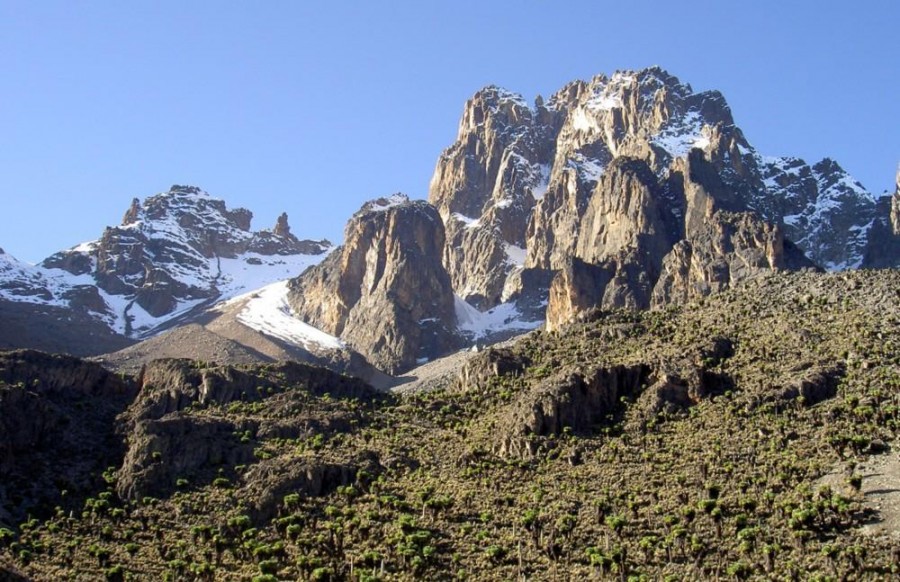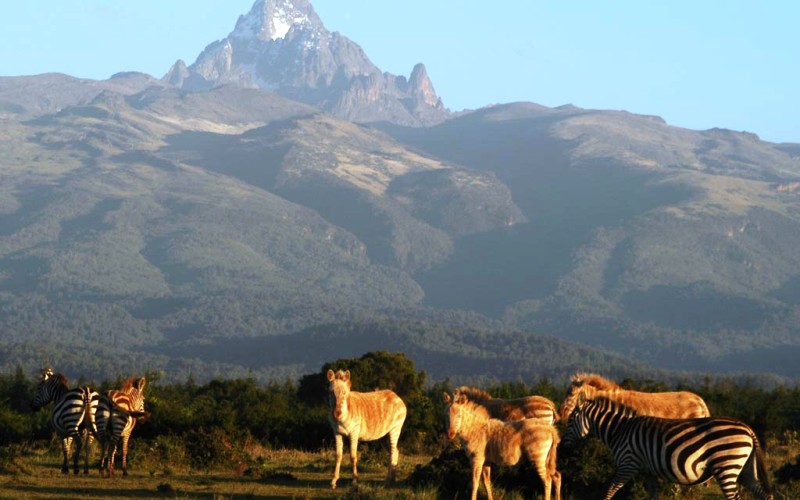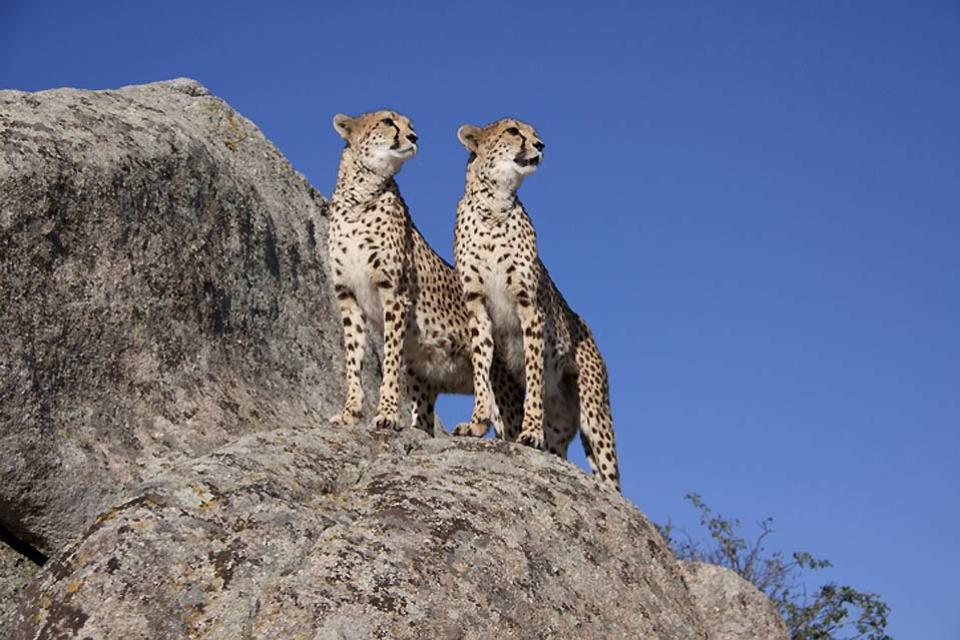Mount Kenya National Park
Climbing to 5,199 meters, Mount Kenya National Park is the second tallest mountain in Africa. The scenery surrounding this designated World Heritage Site is breath-taking. It is pristine wilderness with lakes, tarns, glaciers, dense forest, mineral springs and a selection of rare and endangered species of animals, high altitude adapted plains game and unique montane and alpine vegetation. Visitors can enjoy mountain climbing, camping and caving with the mountain’s rugged glacier-clad peaks providing the perfect backdrop.
Mount Kenya National Park is located in the East of the Great Rift Valley, about 175km North-East of Nairobi. The Ecosystem lies in Central and Eastern provinces of Kenya. At 5,199m the Mountain is the second highest peak in Africa.
Mount Kenya is an important water tower in the Country. It provides water for about 50% of the country’s population and produces 70% of Kenya’s hydroelectric power. UNESCO inscribed Mount Kenya as a World Heritage Site. Its described as one of the most impressive Landscapes in Eastern Africa with its rugged glacier-clad summits, Afro-alpine moorlands and diverse Forests that illustrate outstanding ecological processes.
Many rivers flow from the perpetual snows, among them the mighty Tana, Kenya’s largest and longest River and source of much of Kenya’s electricity supply. Most visitors are content to marvel at the Mountain’s beauty but some will want to attempt to reach the peaks. The Mountain’s lesser peaks and glaciers can be scaled and walked by the fit and the adventurous.
Mount Kenya National Park Access
Roads: 175 Kms from Nairobi, the Park can be reached on Nanyuki-Isiolo road via Sirimon Track or Nyeri-Nanyuki road near Naro Moru. The Park is also reachable via Chogoria on the Embu – Meru road, about 150km north of Nairobi.
Airstrips: The closest commercial Airstrip to the Park is at Nanyuki
Major Attractions Mount Kenya National Park
Pristine Wilderness, Lakes, Tarns, Glaciers and Peaks of great beauty, geological variety, Forest, Mineral springs, rare and endangered species of animals, High altitude adapted plains game, Unique Montane and alpine vegetation with 11 species of endemic plants.
Wildlife
Include Elephants, Tree hyrax, White Tailed Mongoose, Suni, Black Fronted Duiker, Mole Rat, Bushbucks, Waterbuck and Elands. Animals rarely seen include Leopard, Bongo, Giant Forest Hog and Rhino. Over 130 bird species have been recorded.
Activities
Game viewing
Camping
Mountain Climbing
Cave Exploration
What to take with you
Drinking water, picnic items and camping equipment if you intend to stay overnight, walking boots, warm clothing, training shoes, socks, sandals and gaiters. Also useful are: Binoculars, Camera, Hat, Sunscreen, Sunglasses and Guidebooks.
When to climb Mount Kenya
Good seasons to climb are December to March and June to October. You may want to climb Mt. Kenya, when the moon is full or nearly full. Reaching your chosen peak in the period three or four days before or after full moon will still ensure a moon-lit climb.
Gallery



